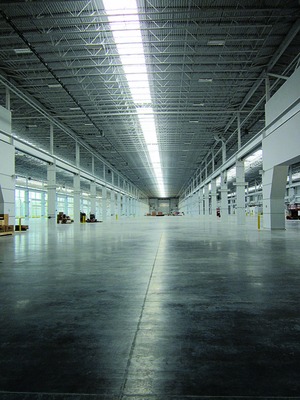
Chinese manufacturers are on track this year to become the second-largest global exporters of construction equipment, but it will take some time for them to pose a threat to established suppliers.
“They are moving faster than we expected,” says Stephen Joske, director of China forecasting for the Economist Intelligence Unit and author of the EIU report, “Heavy Duty: China's Next Wave of Exports,” released last month.
Last year, the U.S. led construction equipment exports—a $153.2-billion global marketplace—with a 15.7% share. It was followed by Germany (11.5%), Japan (10.8%) and China (10.2%), says EIU. After a decade of buildup to meet domestic demand, the Far East is emerging as a rival to traditional players like Caterpillar and Komatsu.
“We expect competition to increase over time as new players from Asia begin to penetrate the western markets,” says analyst Lawrence De Maria, who co-heads Chicago-based William Blair & Co.'s global industrial infrastructure group. “Still, due to relatively high barriers to entry, we do not believe that western manufacturers are at serious risk to lose share in the near to medium term.”
Capacity is one Chinese advantage. Last year, China consumed 172,000 excavators and 187,000 wheel loaders to serve projects there. In contrast, the U.S. consumed about 9,400 excavators and 9,300 wheel loaders, according to Manfredi & Associates Inc., Mundelein, Ill.
“The Chinese domestic market is huge,” Manfredi said in a report last fall. “It is larger than the rest of the world combined for most product categories.”
Caterpillar is spending $1 billion to ramp up production in China, where the company has suffered from “capacity issues,” says Adam Fleck, an associate research director with Morningstar Inc., Chicago. “China is also home to many cheaper-priced competitors, whereas Cat caters to the high end of the market.” Asian competitors, such as Sany, Hitachi and Komatsu, have gained market share in China as a result, benefitting from low prices and cheaper production costs.
As Beijing slows down its economic engine, Chinese suppliers are exporting more. But Asia faces an uphill battle due to nagging questions about quality, long-term reliability and advanced technology. Cultural differences, customer brand loyalty, and domestic parts and service pose additional obstacles.
“The Chinese still face very difficult barriers to entering the U.S. market,” says Shi Yang, an analyst with Off-Highway Research in Beijing. “They're not able to catch up technically. For example, they're just implementing Tier III [air-quality] standards in China. However, the big challenge is distribution. It takes a long time and a large investment to build up a distribution network.”
As such, the largest importers of Chinese equipment are emerging markets, such as the Middle East, Africa and South America, where air emission standards are lax and contractors see equipment as disposable tools. In those markets, the newcomers “are competing on price, not quality,” Joske explains.


Post a comment to this article
Report Abusive Comment